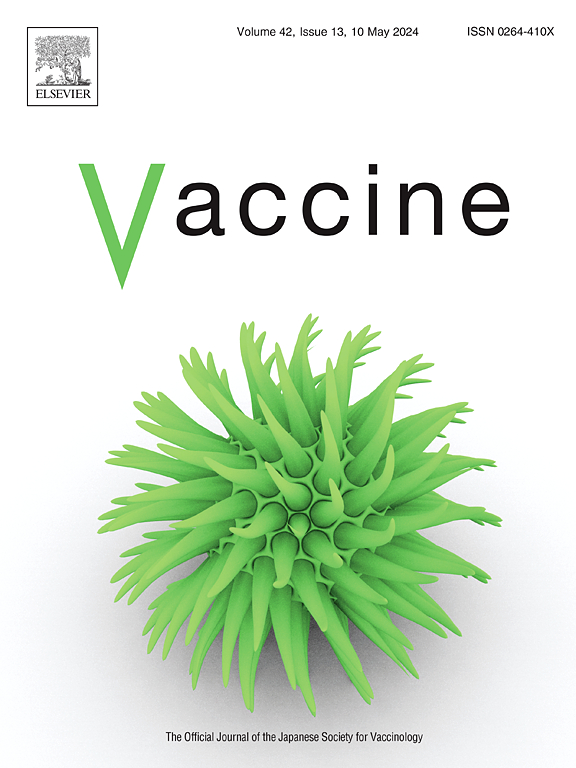Family spillover effects in cost-effectiveness analyses of vaccines
IF 4.5
3区 医学
Q2 IMMUNOLOGY
引用次数: 0
Abstract
Objectives
We evaluated how frequently vaccine cost-effectiveness analyses (CEAs) include family spillover effects, costs or health impacts on family members who care for or about patients, and how their inclusion affects results.
Methods
Using the Tufts CEA Registry, we performed a systematic review to identify English-language CEAs published from January 2013 to December 2022 from the societal perspective. We selected CEAs for the four vaccines most evaluated within our search, examined how frequently these CEAs included family spillover effects, and how this inclusion changed CEA results.
Results
Among 268 vaccine CEAs meeting inclusion criteria, the top four vaccines were: human papillomavirus (n = 21), influenza (n = 57), pneumococcal (n = 37), and rotavirus (n = 25). (137 studies, 51 % of total). Of these, 65 (47.4 %) included family spillover effects, predominately time costs (n = 64, 98.5 %). Only four studies (6.2 %) included family spillover health effects. From 30 studies, we created 266 pairs of incremental cost-effectiveness ratios (ICERs), with each pair consisting of one ICER calculated with and then without family spillover effects. We then compared each pair to assess the impact of including family spillover effects on the ICERs. With 29 ICERs (10.9 %), including family spillover changed the result from a positive ICER, with a positive cost and benefit, to cost-saving, with a negative cost and a positive benefit. In 30 cases (11.3 %), ICERs remained cost-saving and in 207 cases (77.8 %) ICERs remained positive, with and without spillover effects. Among these, 206 pairs (99.5 %) showed a mean ICER reduction of 18.8 %, while one pair (0.5 %) increased by 13.3 %.
Conclusions
Approximately half of vaccine CEAs in our sample excluded family spillover effects. When included, most added family spillover costs but rarely family health effects, and generally showed more favorable results. Future vaccine CEAs should appropriately include family spillover effects to reflect vaccines' full value and support evidence-based decision-making.
疫苗成本效益分析中的家庭溢出效应。
目的:我们评估了疫苗成本效益分析(cea)纳入家庭溢出效应、对照顾患者的家庭成员的成本或健康影响的频率,以及纳入这些因素如何影响结果。方法:利用Tufts CEA Registry,从社会角度对2013年1月至2022年12月发表的英语CEA进行系统回顾。我们为搜索中评估最多的四种疫苗选择了CEA,检查了这些CEA包含家族溢出效应的频率,以及这种包含如何改变CEA结果。结果:在268种符合入选标准的cea中,排名前4位的疫苗分别是人乳头瘤病毒(21种)、流感(57种)、肺炎球菌(37种)和轮状病毒(25种)。(137项研究,占总数的51%)。其中65项(47.4%)包括家庭溢出效应,主要是时间成本(n = 64, 98.5%)。只有4项研究(6.2%)纳入了家庭外溢健康影响。从30项研究中,我们创建了266对增量成本-效果比(ICERs),每对都由一个具有和不具有家庭溢出效应的ICER组成。然后,我们比较了每一对,以评估纳入家庭溢出效应对ICERs的影响。包括家庭溢出在内的29例ICERs(10.9%)将结果从具有正成本效益的积极ICERs转变为具有负成本效益和正效益的成本节约。在30例(11.3%)病例中,ICERs仍然节省了成本,在207例(77.8%)病例中,ICERs仍然呈阳性,有或没有溢出效应。其中206对(99.5%)的ICER平均降低了18.8%,1对(0.5%)的ICER平均提高了13.3%。结论:在我们的样本中,大约一半的疫苗cea排除了家庭溢出效应。当包括在内时,大多数增加了家庭溢出成本,但很少增加家庭健康影响,并且通常显示出更有利的结果。未来的疫苗cea应适当包括家庭溢出效应,以反映疫苗的全部价值并支持循证决策。
本文章由计算机程序翻译,如有差异,请以英文原文为准。
求助全文
约1分钟内获得全文
求助全文
来源期刊

Vaccine
医学-免疫学
CiteScore
8.70
自引率
5.50%
发文量
992
审稿时长
131 days
期刊介绍:
Vaccine is unique in publishing the highest quality science across all disciplines relevant to the field of vaccinology - all original article submissions across basic and clinical research, vaccine manufacturing, history, public policy, behavioral science and ethics, social sciences, safety, and many other related areas are welcomed. The submission categories as given in the Guide for Authors indicate where we receive the most papers. Papers outside these major areas are also welcome and authors are encouraged to contact us with specific questions.
 求助内容:
求助内容: 应助结果提醒方式:
应助结果提醒方式:


